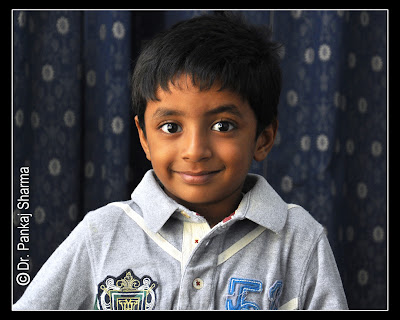--Learning--
Creating Portraits in Window Light
Portrait photography is an important art-field. With the change in time, there are new techniques and well equipped studios which help us clicking the attractive portraits. But exclusive setups are not within the reach of every photo-artist. One can click good portraits in the soft light of a window with limited resources also, as our vision is higher than any other thing. With a few points in our brain, we can prepare good portraits:
1. Our subject should look comfortable with spontaneous expressions.
2. A good D SLR Camera with a mid-range zoom lens (such as 18-70 mm or 18-105 mm) is good for our purpose. We have to avoid taking portraits at the wide angle of our lens. The focal length between 70 mm to 100 mm will be perfect. Moreover the lenses with fixed focal lengths, like 85 mm or 100 mm are ideal for portraits.
If we lack D SLR Camera, a compact camera can also serve our purpose. The portrait mode of compact cameras is very useful in taking pretty images.
If we lack D SLR Camera, a compact camera can also serve our purpose. The portrait mode of compact cameras is very useful in taking pretty images.
3. We should photograph the subject during morning or evening in order to get soft light of window.
4. The one sided use of light will present the subject with good depth and mood. We have to manage our subject in such a way that a small portion of light may create a soft triangular shape on the other side of the face (below the eye). If the light is at around 45 degree to the subject, this will help causing the triangle of light under the eye of the subject. If the other side of the face looks too gloomy, we can use the sheet of a white paper or thermocol to provide fill light to the dark areas. But the fill light should always be lesser than the key light. Furthermore, we should pose our model at such angle which may help him/her to have catch-light in his/her eyes.
5. The background plays a vital role. Colour of the background should not be very fast. A dull-colour is always appreciated. In nutshell, background should never dominate the main subject.
6. Positioning our camera at the eye level of subject is advisable. However, we can create some different pictures with a change in view point.
7. The slight wide opening of aperture is generally useful. This keeps the background blurred and as a result our subject looks much lively and prominent.
8. We should always focus at the eyes of the subject.
9. Use of a tripod is always advisable to avoid camera shake and to get sharp images.
Concluding words: Above mentioned points are just basic guidelines; the aesthetic sense of a photo-artist is the key to achieve stunning portraits.
--Dr. Pankaj Sharma


















